Is Data the New Oil and How Can It Help My Business Insights?
July 19th, 2023
5 min read
By Marc Zinck

If you’re reading this article, you’ve probably got a lot of historical data for your company stored up. In fact, if data was oil, you’d be sitting on a gold mine. You know it’s valuable, and you know it could tell you a lot, but it needs to be extracted first. And, just like oil needs to be refined before you can use it, your data does, too.
Sure, you can use raw data for more superficial kinds of analytics. But to get to its true power, you need to synthesize and analyze your data to get actionable insights. Then you can use those insights to inform your decisions.
At ERP Suites, we have worked with many clients to get the most out of their data. Our team of experts have 500 collective years of experience, and we’ve learned a lot about data refinement and data analytics. We help clients use their data to its fullest potential, maximizing their existing assets. That’s the least you should expect from a partner who’s helping you fuel your business with your data-driven insights.
This article explains the importance of data in modern business and how you can harness its power.
Why Is Data the New Oil?
Data is often referred to as the new oil because of its potential to revolutionize industries and economies. Just as oil powered the industrial revolution, data powers the digital revolution. Here’s why:
1. Data Drives Decision-Making
Informed decisions rely on accurate data. Businesses that effectively analyze their data gain a competitive edge. They’re identifying trends, forecasting demand, and improving operations, ahead of their competitors. Their supply chain pipeline is leaner and more effective, too.
Take a national retail clothing chain for example. They are trying to predict demand for the holiday season. They can analyze customer purchase history data to see who’s buying what, and when. By identifying peak buying periods, the clothing chain can stock stores accurately – avoiding overstocking or understocking.
For instance, data shows a spike in winter coat sales, starting in late October. The chain can use this information to guarantee they have enough of the right inventory to meet that demand. And voila, they reduce waste and maximize sales opportunities.
2. Data Fuels Innovation
From personalizing customer experiences to developing AI-driven technologies, data is at the core of groundbreaking innovations.
A healthcare provider analyzes patient data to identify patterns in treatment effectiveness. Using aggregated patient data, the provider discovers that a specific treatment plan reduces recovery time for certain conditions by 30%. This insight allows the provider to recommend tailored treatment options, improving patient outcomes and building trust with clients.
3. Data Unlocks Competitive Advantage
Companies that leverage data analytics outperform competitors by making faster, more informed decisions.
Let’s take for example a logistics company. They use IoT sensors and data analytics to optimize delivery routes. By analyzing traffic patterns, weather data, and delivery schedules, the company reduces delivery times by 20%. Additionally, rerouting trucks during peak traffic hours saves on fuel costs. This enhances customer satisfaction by ensuring on-time deliveries.
How Does Data Fuels Business Insights
Turning raw data into actionable insights requires a systematic approach. Just like crude oil must be extracted and refined to become useful, data must be collected, cleaned, and organized to unlock its full potential. Data often exists in two forms: structured and unstructured.
- Structured Data is neatly organized and stored in predefined formats, such as databases and spreadsheets. Examples include customer names, sales figures, and transaction records.
- Unstructured Data, on the other hand, includes information that doesn’t follow a specific format, such as emails, social media posts, images, or videos.
Anyone can use their data to look more closely at their data and make better business decisions. But to do it, businesses need to collect data from their ERP systems, IoT devices, and customer records. The next step is to remove duplicates, inaccuracies, and irrelevant entries.
For example, sales data typos might mean one customer has multiple accounts. Cleaning solves that. Then, data is organized into formats that can be analyzed, like tables and charts. This means it can now be put to use.
Imagine a manufacturing company collects data from IoT sensors on its machines. These sensors track performance, alerting workers to anomalies like temperature spikes. Before this data can be used for various phases of machine maintenance, it needs to be refined.
The company cleans the data, removing duplicate entries, before formatting it. In this case, the business makes a time-series graph. Their team is able to visualize patterns, and ensure effective monitoring and decision-making.
Data Analysis and Interpretation
After data is refined, data analysis tools transform information into pieces that can be digested and synthesized for better understanding. Let’s say a sales team uses analytics to determine 60% of their revenue comes from just 20% of their customers.
On its own, this is just useful information. But apply analytics, and you can segment this data. Now the business can identify high-value accounts they want to hold onto. They create targeted strategies, like exclusive loyalty programs, to nurture these customers. This leads to increased retention and revenue growth.
Actionable Data Insights
Now we come to data-as-oil’s final boss form: insights to directly guide business strategies, decision-making, and operational improvements.
Take a popular restaurant chain, for example. This restaurant chain discovers through online review analysis that mentions of “fast service” correlate with higher customer retention rates. By analyzing average service times and identifying bottlenecks, the chain streamlines operations. This leads to shorter wait times, better reviews, and increased customer loyalty.
How ERP Tools Turn Data into Gold
ERP systems have a variety of tools built in to help businesses better analyze and utilize their data. Take ERP Suites' Analytics and Business Intelligence platform for example. It empowers businesses to unlock the full potential of their data. This platform uses the Oracle Cloud Infrastructure (OCI) and Oracle Analytics Cloud (OAC) to unlock data as a strategic asset. Let’s explore the key features that make this platform a game-changer:
Oracle Analytics
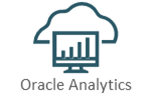
Visualize data with over 50 drag-and-drop components and pre-built dashboards.
To author analytics solutions, ERP Suites subscribers have access to 50+ OAC drag-drop visualization components, an EnterpriseOne Starter Kit, and a growing community of illustrative workbooks (i.e. dashboards) as solutions.
EnterpriseOne AIS Data Integration
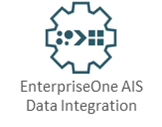
Extract data securely and seamlessly with scheduled integrations.
ERP Suites-supported code leverages a secure, scheduled EnterpriseOne Application Integration Services (AIS) connection to extract requested data. ERP Suites provides integration and technical development, as well as operational monitoring.
DD, UDC, and Dates
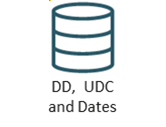
EnterpriseOne Data Dictionary (DD) values and User Defined Codes (UDC) are included so business users can create analyses. Julian dates are converted to standard format for extensive data analysis.
Autonomous Database
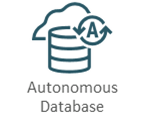
Merge ERP and non-ERP data sources for a holistic view.
Whether it's EnterpriseOne, other data applications, SQL or No SQL DB, Oracle Cloud Infrastructure (OCI) houses critical records for analytic processing. By merging ERP and non-ERP data sources, business users are enabled with a holistic view of data to gain business insights. ERP Suites creates "business friendly" database tables and views to jump start analysis.
EnterpriseOne REST APIs Integration
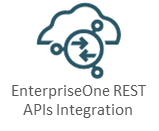
Integrate third-party applications for a modern data strategy.
ERP Suites EnterpriseOne REST API data integrations are enabled to reduce the need to extract, transform, and house data. To the business analyst, REST data acts just like another data source.
EnterpriseOne Drill into Analytics
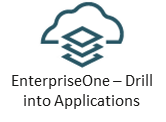
Rather than housing records, large transactional records sets can remain in your ERP. OAC workbooks are enabled to drill back into EnterpriseOne-secured application(s) with detail and related records.
Reference Data
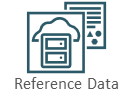
Businesses frequently possess distinctive reference data or datasets that are crucial for analysis. ERP Suites enables CSV and Excel-based Reference Data without the hassle of creating JSON, XML, or DTS services to import as database tables. Reference Data becomes critical data to enrich the analysis, gain insights, and provide your business' unique understanding.
File System
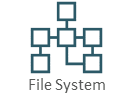
ERP Suites provides object storage for unstructured data such as files, images, and documents. Enabled image processing services recognize popular formats such as JPEG, PNG, GIF, and TIFF formats. Unlocking image data further enables insights and understanding.
REST APIs Integration
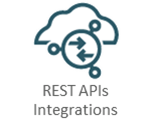
A "Modern Data Strategy" combines CRM, HRIS, MES, Time Mgt, IoT, T&E, Bank, Logistics/Carriers, and other data source providers, combined with EnterpriseOne, to create a more comprehensive view and business understanding. 3rd-party REST application provided upon request.
iFrame

Interact with content without extraneous interfaces.
ERP Suites customers can immediately benefit from SharePoint integration. iFrame functionality seamlessly integrates and embeds content in multiple contexts, empowering casual users with the ability to access and interact with analysis directly within various applications or websites.
Mobile App

Access data insights on the go.
On-the-go users can download the Oracle Analytics app to explore and analyze data visualizations anywhere. The Oracle app can also be enabled to provide alerts and notifications.
Email Delivery

Schedule reports for automatic delivery.
Once an OAC analysis has been finalized, users can schedule delivery, dashboards, or visualizations as email in PDF and PowerPoint format. For example, management can receive up-to-date analysis of Sales from EnterpriseOne, merged with CRM demographics and market trends on a regular basis, without request or user intervention.
Harness the Power of Data with ERP Suites
Much like oil, data is a resource that, when properly understood and synthesized, can take us to new places. To get started on your journey harnessing the power of data, reach out today.
Our analytics team at ERP Suites can help you make the most of your data with the Analytics and Business Intelligence data platform.
Marc Zinck is a certified number cruncher (CPA) with a 20-year penchant for ERP. As an ERP Suites Advisory Practice Director, Mark investigates, ideates, and integrates emerging technologies to build holistic business cases.
Topics:


.png?width=960&height=540&name=Blog%20Images%20(82).png)
.png?width=960&height=540&name=Blog%20Images%20(68).png)
.png?width=960&height=540&name=Blog%20Images%20(17).png)


